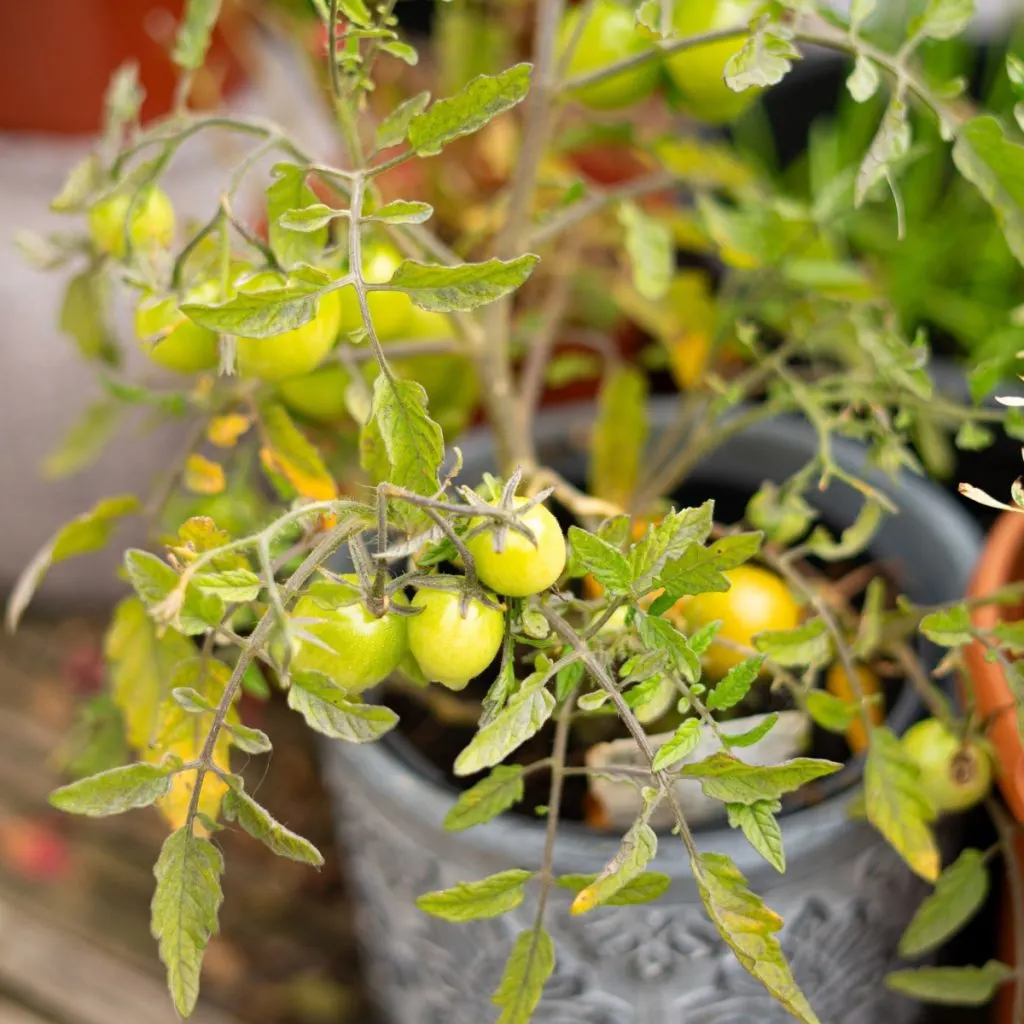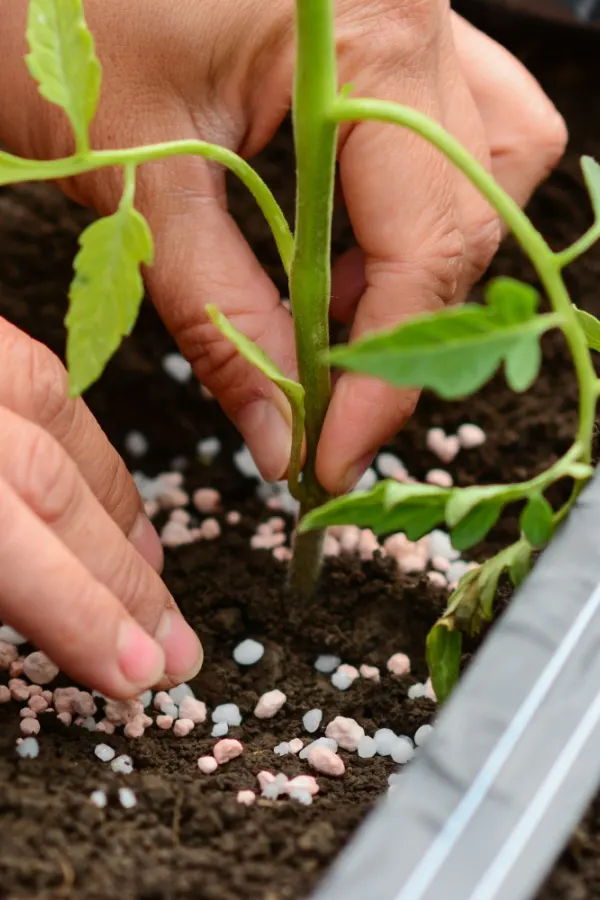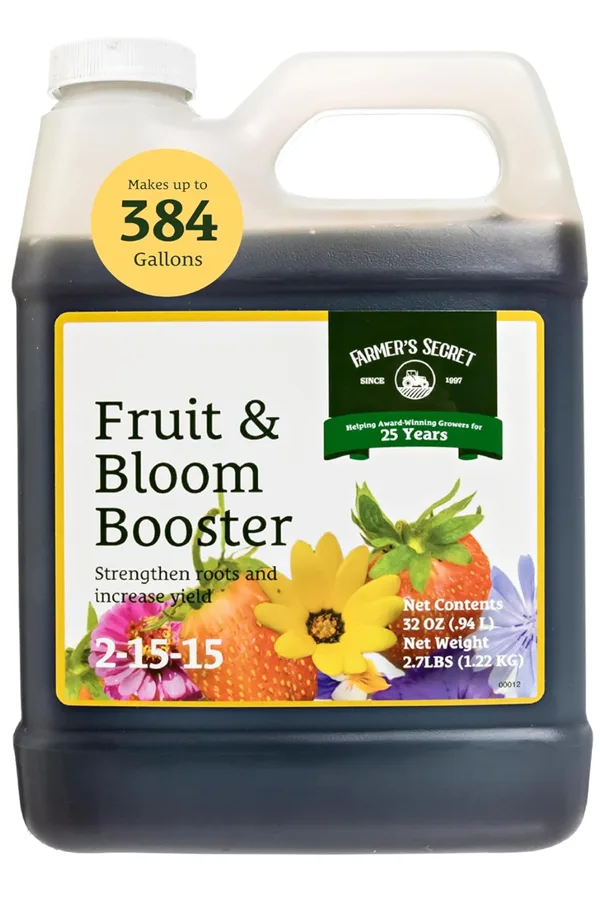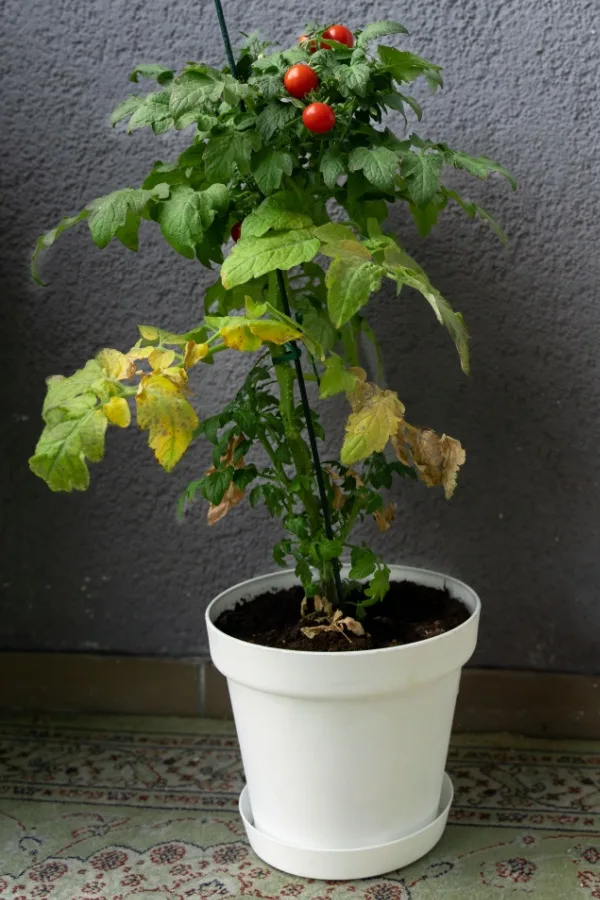Looking for a few simple ways to revive your potted tomato plants this summer and keep them producing strong all the way to fall?
Growing tomato plants in pots and containers is a great way for people to grow their own food without the restrictions or issues that traditional gardens pose. Even those with just a tiny porch or patio can enjoy the amazing flavor and nutritional benefits of growing their own food.
The drawback, however, is that by mid summer, many potted tomato plants often start to fail if not given a little bit of extra care. The good news? Getting your plants back to strength and producing strong isn’t difficult at all. In fact, with just a few simple tasks, you can have them flourishing once again!

Why Potted Tomatoes Often Struggle
One of the biggest reasons why potted tomato plants start to struggle is because of a lack of nutrients.
Tomato plants are extremely heavy feeders. It takes a tremendous amount of resources to grow several feet tall – let alone produce a large harvest of ripening fruit. Even determinate tomatoes that only grow to a standard size and produce fruit during a short time frame use a myriad of nutrients from the soil.
Unfortunately, if those nutrients and resources aren’t replenished throughout the growing season, the plants will start to suffer. The result are plants that quickly start to look frail. Even worse, they also slow way down on setting blooms and become more susceptible to insect damage and diseases. Thankfully, that’s where fertilizers come into play.
How To Revive Potted Tomato Plants
Powering Tomatoes In Pots
Since tomato plants are such heavy feeders, they need the help of fertilizer. This is especially important for those growing in pots and containers due to the limited amount of soil and resources available.

There are two main types of commercial fertilizers – granular and liquid. Granules are mixed into the soil at the base of plants. Every time it rains or you hand water plants, the nutrients leach down to the plant’s roots.
However, the main downside of granular fertilizers is that you don’t have much control over how much power the plants get. For example, heavy rains can cause plants to get a huge dose of nutrients one day and then nothing for several following days. This inconsistency can negatively affect the production of blooms and tomatoes.
As an alternative, liquid fertilizers provide plants with a steady but low dose of nutrients in a more consistent manner. In addition, liquid fertilizers can easily be absorbed by both the plant’s roots as well as the foliage and stems. This helps to set the stage for steady growth and strong fruit production.
How And When To Apply Liquid Fertilizers
Using liquid fertilizers, you can more easily control both the dose and the strength of the nutrients just by altering the amount of liquid you provide the plants.

By reducing the fertilizer dose, you can give plants a light stream of nutrients but apply it more often for a steady supply. This eliminates the chance of both overpowering and under-powering plants.
To make this work for potted tomato plants, apply the liquid fertilizer at half the recommended dose, but do so every week. It might seem like a lot, but it will be the perfect amount to revive potted tomato plants and keep them producing strong.
What Fertilizers To Choose
When looking at commercial liquid fertilizers, choose one that has a low ratio of nitrogen (N) and at least double or triple the amount of both phosphorous (P) and potassium (K).
Too much nitrogen will cause plants to focus their energy on producing foliage. The higher amounts of phosphorous and potassium will allow plants to focus on setting blooms. It will also help them stay healthy throughout the entire growing season.
A great example of this is Farmer’s Secret Fruit & Bloom Booster Fertilizer. It has an N-P-K ratio of 2-15-15. This ratio is ideal for growing strong tomato plants that have good harvests. Product Link: Farmer’s Secret Fruit & Bloom Booster Fertilizer

Giving Potted Tomato Plants The Moisture They Need
Plants That Struggle From A Lack Of Moisture – How To Revive Potted Tomato Plants
Another reason why potted tomato plants often start to look less than ideal by mid-summer is due to water. And that can be either a lack of moisture, too much – or inconsistent watering.
Spring typically brings about multiple rain showers and moist air, which often helps to keep the plants adequately watered. But as the hot summer air heats up and rain showers get fewer and farther in between, tomato plants start to rely on hand watering.
This is especially true for potted tomato plants. They only have a limited amount of soil that can absorb and retain that moisture. In addition, potted tomatoes are often blasted with heat on all sides of the container as opposed to just on the top.
Without proper moisture, the plant’s roots will start to dry up. They can no longer take up and distribute much-needed nutrients throughout the rest of the plant.
On the flip side, overly saturated roots swell so large that they also cannot soak up and distribute nutrients. This can result in plants that need to be revived long before the plants should be done growing and producing.

Keeping Plants Watered
Use your finger or an inexpensive soil moisture meter to check the moisture level of the soil. Only water when the meter indicates it or if your finger comes up dry. But don’t be surprised if you need to water potted tomato plants daily, especially during extremely hot spells. And on extremely dry days – even once in the morning and once in the evening!
By feeding your tomato plants with a low dose of liquid fertilizer and keeping them watered well, you can revive your potted plants and keep them producing long through the summer months!
I Grow Tomatoes
Follow Our Facebook Page For Even More Great Tomato Growing Tips! I Grow Tomatoes Facebook Page
I Grow Tomatoes is a website created for those who love all things about tomatoes – from planting and growing – to cooking and canning! We publish two articles every week, 52 weeks a year. Sign up today to follow via email! This article may contain affiliate links.
